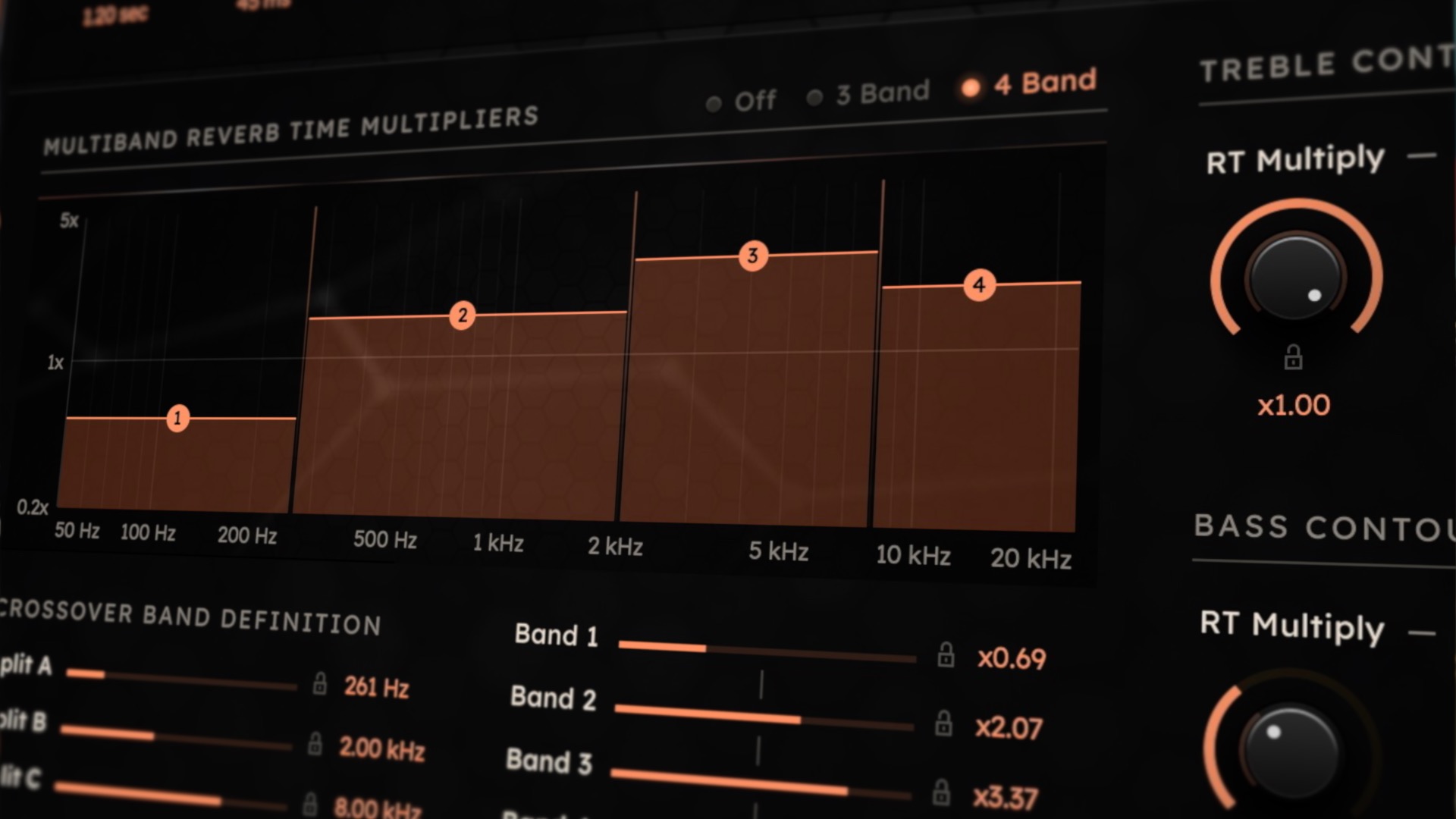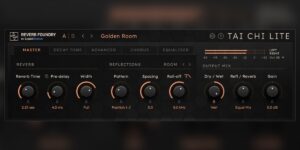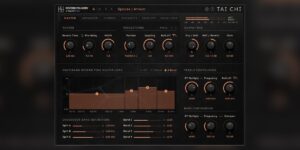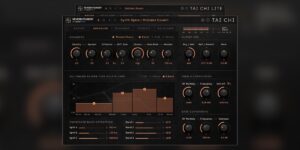
I recently received this question asking me what the difference is between the multi-band reverb multipliers and decay time contouring in Tai Chi:
In short, contouring sounds more natural because it erodes reverb away towards the specified frequency (and continues eroding after hitting it at the specified reverb time multiplier), whereas multi-bands are more creative (but sound more artificial) because they work entirely within fixed frequency bands.
The high reverb time contour filter in Tai Chi is implemented with simple low-pass filters in the reverb loop. This is a very common technique and has been used for years in many classic designs. Every time audio goes around the reverb loop it hits a series of simple roll-off or boost filters (the more times the smoother the decay). In some reverbs the time between filtering is fixed and in others it is variable such as with a Lexicon where it is dependent on the ’size’ control (which effectively defines the delay loop length, and hence the time between hitting the filters).
This slowly erodes or boosts the reverb’s low or high frequencies every time audio goes round the loop. The high cut filters help to simulate the high frequency roll-off of sound as it propagates through air or reflects off walls/objects leaving you with only mids/bass. It’s sufficiently flexible, fairly gentle, and realistic enough to provide a familiar real-world experience. Usually it’s all we need to naturally represent how a reverb’s top end erodes over time.
Suppose we have a 10 second reverb time and a 0.5x RT multiplier focused around 6 kHz. That just means that when the decay hits 5 seconds the top end at 6 kHz will have been eroded so many times it is -60 dB lower than it was at the start. Put another way, the reverb time at 6 kHz is half the master decay time.
Low contouring isn’t a great deal different, boosting or cutting the lows similarly, so I’ll spare the details here.
The way TC Electronic handles the frequency-dependent aspect of reverb decays over time was generally via multi-band filtering, and that was the inspiration for using them in Tai Chi’s multi-band section.
These are implemented differently of course. In the reverb loop the audio is split into multiple bands, positive or negative gain is applied to those bands based on the required RT multiplier, and then the audio is recombined. This is computationally more expensive than a simple one-pole filter, so you can switch it off or use fewer bands if you don’t need all four.
Of course each time round the loop audio hits the same split points and the same gain is applied – so regions boost or suppress in the same frequency range every time. It rigidly zones the reverb decay in specific frequency bands. We don’t get a time-dependent frequency focal point that wanders gradually down to the low end as we do when using the high end contouring technique. Since contouring is an iterative roll-off that theoretically heads down to -Inf dB with a cut-off that depends on time due to recursive behaviour it behaves completely differently to the multi-bands.
I think the multi-band approach is very good for creative sound design. The down side is that it is perhaps a bit less realistic so it’s harder to get a natural decay shape that simulates an iterative erosion of highs over time as we hear in nature.
In Tai Chi I included both as each have their benefits, so it’s a very flexible design. Creative reverb design will often benefit from using the multi-bands, natural reverbs are best achieved with the contouring, and in combination we can achieve something between the two if we want to simulate reverbs with clear frequency zone colouration of the space.
Try Tai Chi Today
A 14-day Tai Chi trial is available so you can hear it for yourself, just head to our demos page to drop a code into your license manager and pick up the installers from the Tai Chi page.
If you’d like to own a copy of Tai Chi it is available for $199 in the store, or try Tai Chi Lite for just $99.
Existing customer can use their loyalty discounts for some incredible stackable savings.



